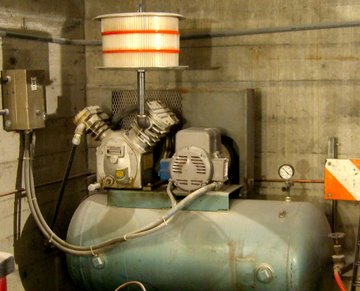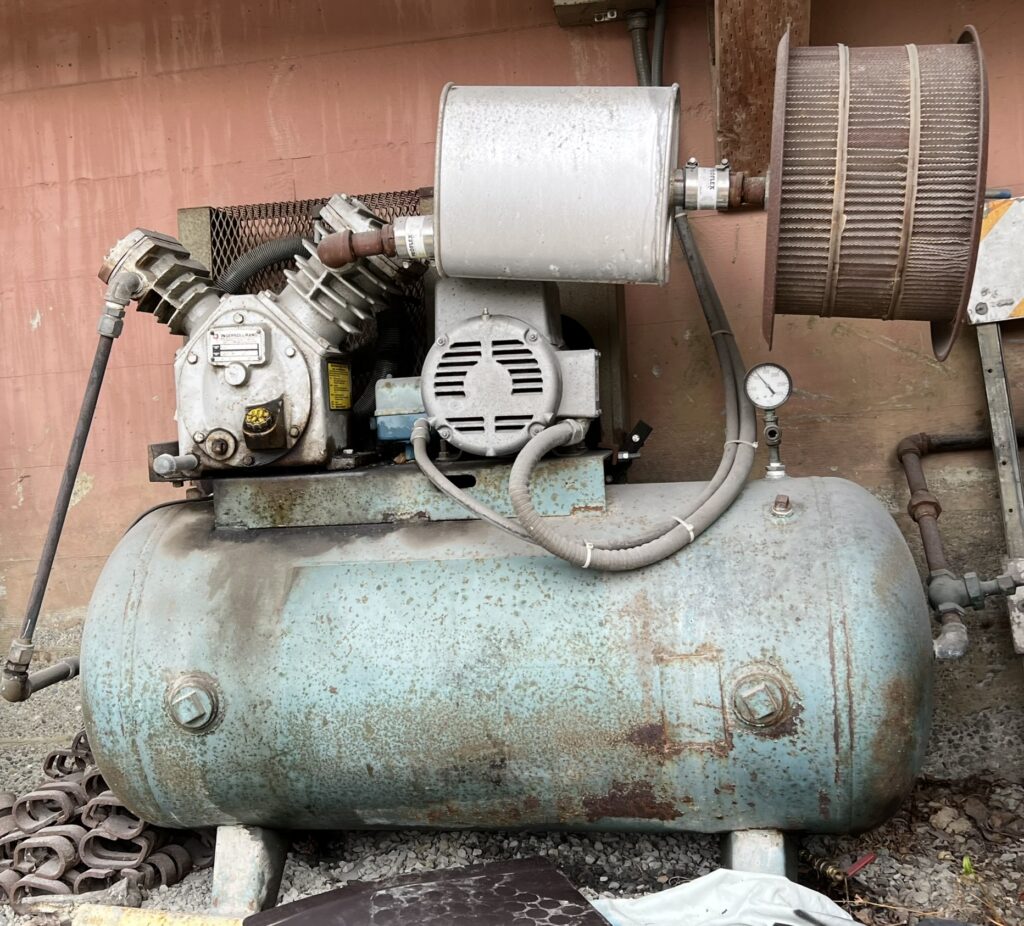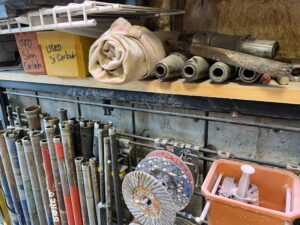
Home » Carve » Tools » Power Carving Tools » Compressors – for your air tools
This post is a plug to give Jeff Powell’s Air Compressors for Carving Stone a read. Its a useful overview and has enough terminology, detail, and advice to get you started and help make some choices in getting going.
Compressor Question: What size compressor will I need?
Answer: The tool with the highest air consumption in Cubic Feet per Minute (CFM). It will likely be one of these: a die grinder (5-8CFM), an air hammer (5-7CFM), or air polisher (12-15CFM). If there is more than one of you using the compressor at the same time, add up the cubic feet per minute (CFM) of ALL tools that will be running simultaneously on the compressor at one time to get a rough estimate of the CFM you’ll need to work continuously.
My setup

The photo on the right is of (what I think is) a homemade set-up acquired it at an estate sale in 2005.
On top is a two stage (two pistons do the work) Ingersol-Rand compressor, specs say: 17.5cfm at 90 PSI (220V 15amp). It’s sitting on a 60 gallon horizontal storage tank.
The air intake is modified (thanks to Sabah and Stuart Kendall) to use commercial truck filters sandwiched between a couple of pizza pans.

To reduce noise, I added a small muffler (smallest and cheapest I could find at an auto parts store) between the air filters and intake and reduced the noise substantially.
The tank is kept at 110PSI – and there are air pressure regulators and water traps at distribution points in the shop. No oiler, I do not want the risk of oil on my stonework. At 17cfm it can run a Trow and Holden “B” & “D” air hammers all day, and it cycles every once in awhile. Also easily provides adequate air for die grinder and air polisher, but it cycles more frequently.
I regularly drain the tank of water buildup. The more it runs and the higher the local humidity the more frequent to drain the tank.
Check the oil level in the compressor.



We need some kind of descriptive text here.